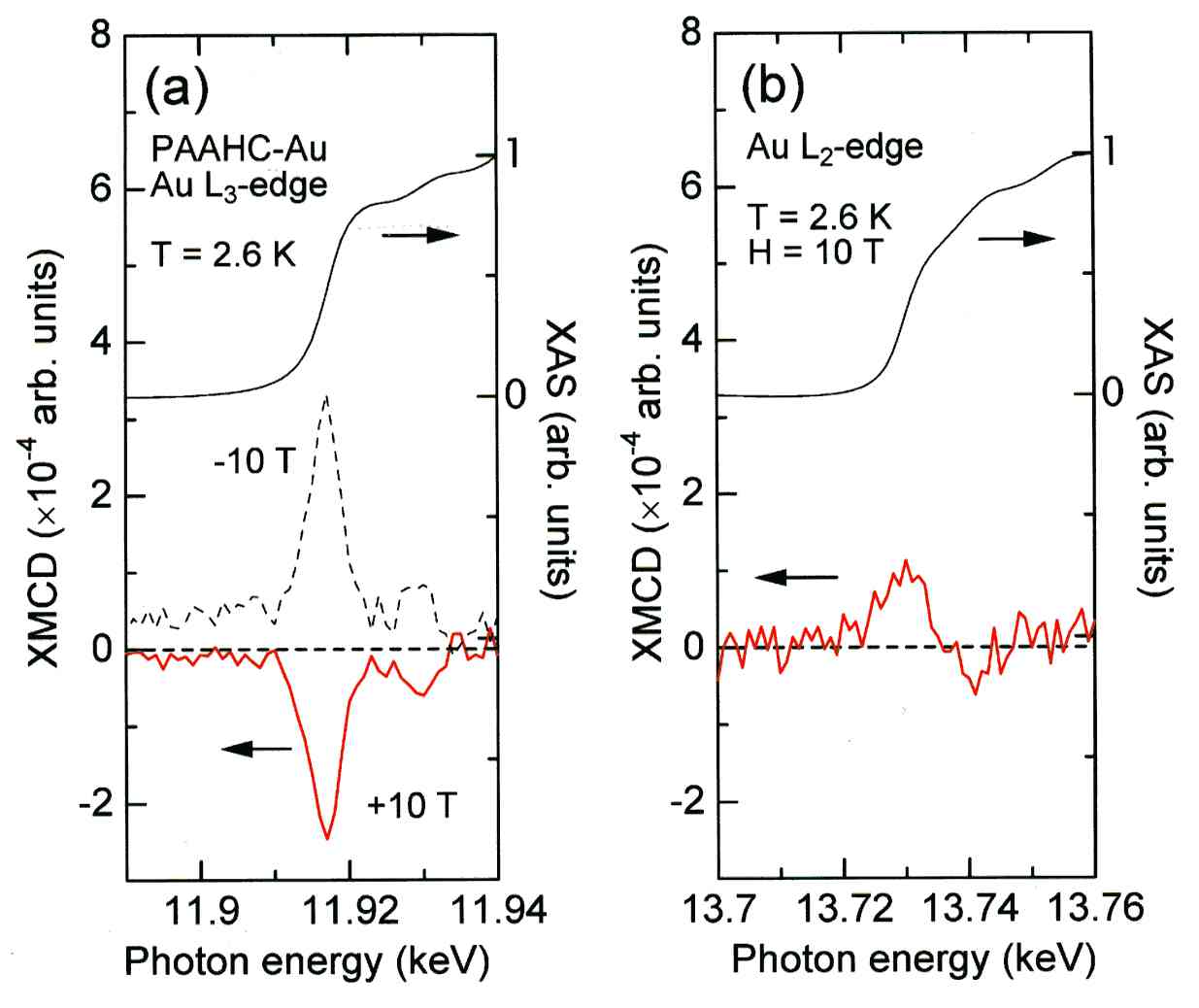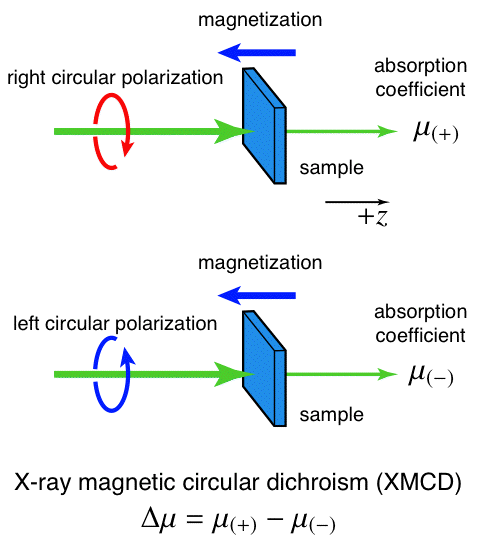Ferromagnetic polarization in Au nanoparticles
Inquiry number
SOL-0000001021
Beamline
BL39XU (X-ray Absorption and Emission Spectroscopy)
Scientific keywords
| A. Sample category | inorganic material |
|---|---|
| B. Sample category (detail) | metal, alloy, magnetic material, nano materials and structures |
| C. Technique | absorption and its secondary process |
| D. Technique (detail) | XAFS, MCD, LD |
| E. Particular condition | polarization (circular), low-T (~ liquid He), magnetic field (> 2 T) |
| F. Photon energy | X-ray (4-40 keV) |
| G. Target information | spin/magnetism |
Industrial keywords
| level 1---Application area | storage device |
|---|---|
| level 2---Target | HD,MO, catalysis |
| level 3---Target (detail) | magnetic layer |
| level 4---Obtainable information | electronic state, magnetic moment, magnetic anisotropy, interface magnetic structure |
| level 5---Technique | XAFS, NEXAFS, XMCD |
Classification
A80.14 magnetic materials, M40.10 XAFS, M40.30 XMCD
Body text
X-ray magnetic circular dichroism (XMCD) spectroscopy is a unique technique to study magnetism of a particular element in the sample. Using this technique, one can separate magnetization of each elements in a sample that consists of several magnetic elements or magnetic and non-magnetic elements. The technique allows high-sensitive detection of weak magnetization induced in non-magnetic elements, such as Cu, Pt, and Au. The figure shows XMCD spectra of Au particles of 1.9 nm diameter. These data provide a direct evidence for ferromagnetic polarization in Au nanoparticles, although bulk Au is non-magnetic.
Fig. X-ray magnetic circular dichroism (XMCD) spectra in Au nanoparticles, measured at the (a) Au L3 and (b) L2 edges.
[ Y. Yamamoto and H. Hori, Journal of the Japanese Society for Synchrotron Radiation Research 18, 3-9 (2005), Fig. 3,
©2005 The Japanese Society for Synchrotron Radiation Research ]
Source of the figure
Original paper/Journal article
Journal title
放射光 vol. 18, No. 1, p. 3 (2005).
Figure No.
Fig. 3
Technique
An X-ray magnetic circular dichroism (XMCD) spectrum is measured by monitoring a small difference in X-ray absorption spectra between for right- and left-circular polarizations. In this solution, X-ray energy was tuned to the characteristic absorption edges of Au to observe the magnetism of Au nanoparticles.
Fig. Principle of X-ray magnetic circular dichroism (XMCD) measurement.
Source of the figure
Private communication/others
Description
鈴木基寛が作成しました。
Required time for experimental setup
12 hour(s)
Instruments
| Instrument | Purpose | Performance |
|---|---|---|
| 10 T superconducting magnet | XMCD spectroscopy and element-specific magnetometry measurements under high magnetic field | magnetic field ±10 T, sample temerature 1.7-300 K |
| Helicity-modulation XMCD | detection of XMCD signals with high accuracy and high sensitivity | XMCD signals less than 0.1% are detectable |
References
| Document name |
|---|
| Y. Yamamoto, T. Miura, M. Suzuki, N. Kawamura, H. Miyagawa, T. Nakamura, K. Kobayashi, T. Teranishi, and H. Hori, Phys. Rev. Lett. 93, 116801 (2004). |
| 山本良之, 堀 秀信: 放射光 18, 3 (2005). |
Related experimental techniques
SQUID magnetometry
Questionnaire
The measurement was possible only in SPring-8. Impossible or very difficult in other facilities.
This solution is an application of a main instrument of the beamline.
Similar experiments account for more than 30% of the beamline's subject.
Ease of measurement
Easy
Ease of analysis
Middle
How many shifts were needed for taking whole data in the figure?
Four-nine shifts



